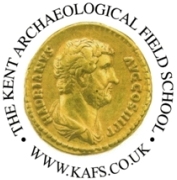 |
||||||

|
Welcome to the Summer 2015 Newsletter from the Kent Archaeological Field School
Breaking News: Destruction of Palmyra To my eternal regret I have never visited Palmyra but Janice Turner writing in the London Times a month or two ago puts into words the feeling of all of us who were going to go one day but life got in the way: The bulldozers haven't begun in Palmyra, yet. Not as I write, but they surely will. And what pleasure for the dead-hearted goons when the honeyed colonnade comes crashing, the Roman amphitheatre is razed. Then the power-tool and sledge-hammer cretins will get busy defiling tombs, tumbling statues, returning the glorious endeavour of a dozen civilisations to dust. Why do I care so much about Palmyra, a place I've never seen, in a country I've never visited? Why do these ancient walls — if I am honest — prey on my mind more than Isis executions, now so frequent that their barbarity is almost banal? Back in March, I realised I could no more watch footage of thugs smashing the winged bulls of Nimrud than of a throat being slit. And it troubled me. How can I weigh 200,000 Syrian, Libyan and Iraqi lives against monuments, temples, carvings — a bunch of stones that I'd never bother to visit in the British Museum. Racism? I'm not ruling it out but, let me say it, every beheaded Christian, woman stoned to death, gay man thrown from a tower, every poor incinerated Jordanian pilot is an atrocity. Yet, people are expendable. I'm expendable, so are you. Infinite others, just like us, will be born, work, push out children, get sick, grow old and then die. Culture is not expendable: it is everything we are and have ever been, the stories we tell, the best hope we have of making sense of our stupid existence. History is not expendable: it represents the continuity and survival of our species. Standing last summer in the Hagia Sophia in Istanbul, a church which became a mosque and is now a museum, I thought of the conquerors who had bowled though, the battles, sultans and emperors, the mighty who rose and fell, while this great Byzantine dome survived. Why do we love ruins, anyway? Why do we leave our holiday pool for cave paintings or pyramids? Why do bucket lists brim with Machu Picchu and the Taj Mahal? Because it is sustaining and heart-soaring to realise we are just pixels in an infinite image; it is a blessed thing to find our angst-ridden lives are mere blinks of time. Before us came Picts and Goths, Romans and Assyrians, who strived and suffered. And look! They had baser needs too, for bath-houses and babies' rattles. They died: we, too, will die. But humanity will go on. And, just occasionally, native genius, prosperity and geographical good fortune collide and human beings bring forth something beautiful. Such is Palmyra. If I were an Isis death-cult disciple, I'd blow it up fast. Such absolutist Wahhabi Islam cannot countenance other faiths, or even the disparate traditions within its own. And, to them, Palmyra represents the worst of all things: a mix of pagan and Semitic cultures, Roman, Greek and Muslim. A gorgeous mongrel of a place. It demonstrates what Isis reviles: the idea that Islam need not be a monolith of violent and rigid prescriptions. Once Muslims lived in pragmatism and peace. From Palmyra's oasis, camel traders set out to make alliances, brokered deals for grain from Egyptians, for silk from the Chinese. They let others worship their own idols; built upon the learning and art of previous cultures to create their own. But, today, all across the Muslim world, the mild, indigenous, tolerant forms of Islam — of Pakistan or Bangladesh or Indonesia — are being obliterated. A Saudi colonialism asserts these are inferior, impure — that a literalist Arabian Islam is the only true faith. As Ayaan Hirsi Ali points out in Heretic, while we in the West assume each succeeding generation is a little wiser and better, Wahhabis believe the age of Muhammad was perfect, thus everyone born since the seventh century is more corrupt. The only solution, then, is to reverse time. Isis are not the first, of course, to see the power of what the historian Andras Riedlmayer called "killing memory". Although it had no strategic significance, the 400-yearold Stari Most bridge was bombed by Croats during the Bosnian war because it was of Islamic design: it proved that Muslims had a right to exist in a land of churches and mosques. The Nazis burned books and "decadent" art. Pol Pot declared Year Zero — when two millennia of Cambodian history ended. Once Palmyra and the last few remaining Middle Eastern antiquities are gone, Isis will be able to say: there is no other way but ours. Already in Saudi Arabia — Islamic State's more hygienic and efficient twin — 95 per cent of Mecca's old buildings have been flattened, including tombs of the Prophet's family, with imams preaching for their destruction. Done in the name of "shirk", the anti-idolatry practised by Muhammad as he established monotheism across the Gulf, it has reduced Saudi culture to two strands: mosques and malls. In destroying the past, Isis knows it can mould the future. Like the party leaders in Orwell's 1984 flinging dissenters' files down the "memory hole" to burn, it will be free to reinvent the truth. No wonder Isis supporters posted on Twitter its ambition to march on Rome, where the monuments to a vivid past stand on every hill. "We will kill your history", they wrote beside photos of the Colosseum and Pantheon. In eliminating ancient architecture, Isis is also destroying the architecture of minds until there is nothing between you and your judging, revengeful God. Not a single joyous distraction — of art or music or history or dance — to fill your heart. The work of 2,000 years gone in minutes. Nothing left but blood and sand. Janice Turner Breaking News: Treasure! Gold! Aircraft! (Read on!) 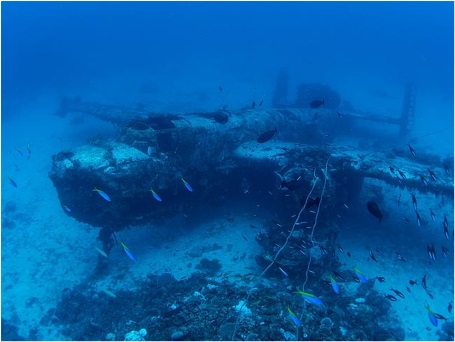 Brandi Mueller a US Coastguard captain has recorded the incredible remains of over 150 WW2 aircraft dumped by the US authorities at the end of WW2 as it ‘it would have cost more to bring them home by ship than replace them’. Located at a depth of 40m in the vicinity of Roi-Namur Island, part of the Marshall Island Group in the South Pacific they include Douglas Dauntless dive bombers, F4U Corsairs, Avengers, Wildcats, and lots more! The Gold Train under Ksiaz Castle in Poland Allan Hall, based in Berlin, and writing for the London Times reports: A 100m long train from the Nazi era was pinpointed in a sealed tunnel deep underground after a deathbed confession, according to Polish authorities searching for wartime gold. Piotr Zuchowski, of Poland's national heritage conservation department, said that the government had secured evidence of the fabled train from images produced by ground-penetrating radar. The man who helped to hide the train in 1945 had confessed on his deathbed, he said. Mr Zuchowski said that the find was unprecedented. Although there was no indication of what was inside, his confirmation stoked the Klondike fever in Poland, which was triggered when two men claimed earlier this month that they could lead authorities to a train carrying Nazi gold in return for a share of the spoils. It is assumed that the two men, a German and a Pole, somehow received news of the dying man's testimony. They have asked for 15 per cent of the value of the cargo, in return for which they would reveal its exact whereabouts. They said that they found the train in a labyrinth of tunnels and bunkers carved out by slave labourers to serve as subterranean arms factories. Their claim was registered with authorities in Walbrzych, 50 miles from Wroclaw, where elderly people have long passed on the legend of a Nazi train trundling west with plundered Polish gold and treasure. The Polish military has sealed off the area over the train but explorations scheduled for this weekend have been put on hold because the local authorities have not yet managed to get central government to agree to pay for the search. The two men claim that they found the train 210 feet below ground. They provided another detail: the train is allegedly armoured, looking not dissimilar to those used by the Nazis on several fronts during the war. Treasure hunters who have swarmed to the area in recent days were asked not to try to find the lost train because there are fears it may be booby-trapped. Mr Zuchowski said that the contents of the train were "probably military equipment but also possibly jewellery, works of art and archive documents". It remains unclear who the dead informant was or when he died. Whatever the train does contain will be the property of the Polish state, which will seek to reunite the cargo with the heirs of the original owners. It is not known if officials have agreed to split any potential profits from its discovery with the duo who claim to have found it. Officials did not say whether they instigated their own radar searches of the ground or used the images taken by the finders. Resting at the foot of the Sowa mountains in woods three miles outside the town of Walbrzeg in western Poland, the train is alleged to be filled with gold, possibly diamonds and maybe even masterpieces stolen from Polish noble families and museums. According to legend, the Nazis loaded all the valuables they had looted from Wroclaw, then called Breslau, to escape the advancing Red Army. What gives credence to the story is the mammoth subterranean project called Riese — German for giant—which was the construction of tunnels, bunkers and under ground stations that begun in 1941. The labyrinth was built deep into the mountains surrounding the gothic castle of Ksiaz, overlooking Walbrzeg. The idea was to move supplies, factories and workers underground in the event of Allied bombing. Andrzej Boczek, a local explorer and treasure hunter, who is also a member of the Silesian Research Group, said: "We think it is here because first of all it is between the two places where we know it disappeared. And it is just 2.37km from Ksiaz castle, which was the German headquarters during the war. That's where all treasures were taken.' Part of the underground works known at Ksiaz Castle Archaeologists find another Nazi hideout deep in the jungle Harriet Alexander writing for the Daily Telegraph reports on another secret Nazi lair:  A TEAM of Argentine archaeologists investigating a series of ruins in the jungle, close to the border with Paraguay, believe they have discovered a secret Nazi lair. The cluster of stone structures, now covered by thick vines and accessible only when using a machete to cut through the undergrowth, contains stashes of German coins from the late 1930s, fragments of "Made in Germany" porcelain, and Nazi symbols on the walls. "We can find no other explanation as to why anyone would build these structures, at such great effort and expense, in a site which at that time was totally inaccessible, away from the local community, with material which is not typical of the regional architecture," said Daniel Schavelzon, the leader of the team. Mr Schavelzon, from the University of Buenos Aires, spent months at the site in the Teyu Cuare provincial park, in the Misiones region of northern Argentina. "Apparently, halfway through the Second World War, the Nazis had a secret project of building shelters for top leaders in the event of defeat – inaccessible sites, in the middle of deserts, in the mountains, on a cliff or in the middle of the jungle like this," said Mr Schavelzon, though he added that his findings were not yet definite. "This site also has the bonus of allowing the inhabitants to be in Paraguay in less than 10 minutes. It's a protected, defendable site where they could live quietly”. “The ruins of Teyu Cuare were originally a Jesuit settlement, and their existence has been known about for years. What nobody had thought to investigate until now were these other structures contained within the same site and which architecturally bear no relation whatsoever to the Jesuit ruins which date from 17th and 18th century. We’ve been visiting and photographing the site quietly since last year but only this year sourced private funds to begin the excavation. There had been no formal study carried out of the area.” Adolf Eichmann, one of the Holocaust’s primary architects, was captured in Buenos Aires in 1960 by an Israeli commando team and taken to Israel to be tried and hanged there. Josef Mengele, the Auschwitz “Angel of Death”, also fled to Argentina. The buildings at Teyu Cuare now appear to have been prepared in advance, either by a low-ranking Nazi, or Argentinian sympathiser of the fascists. “It would appear that these shelters were only inhabited temporarily, the likelihood is that they were built towards the end of the Second World War, perhaps by a Nazi envoy sent to orchestrate the construction of these hideaways should they be needed,” Mr Schavelzon said. “Or they may have been erected by local sympathisers.” Misiones was one of the largest and oldest German communities in Argentina, established by a significant wave of immigrants who arrived in the early 20th century. One theory even suggests that Hitler was able to escape from his Berlin bunker with wife, Eva Braun, through a secret tunnel and flee on one of the last Luftwaffe flights out of Germany, bound for Argentina. In 1945, Juan Domingo Peron’s government sent identification cards and blank Argentine passports to Germany destined for Nazis attempting to flee the country. Many former SS officers and Nazi party members were free to settle in middle-class suburban neighbourhoods of Buenos Aires. “The five Nazi coins and porcelain dish fragment were the findings we disclosed publicly, but the reality is that we have over 2,000 objects, which we’ve stored in boxes and which will now need to be carefully studied and catalogued,” Mr Schavelzon said. “All this will take time. We don’t predict there is much of value. What we have unearthed are empty tins of food, bottles, refuse from that time, and what might have been worth something has long gone.” 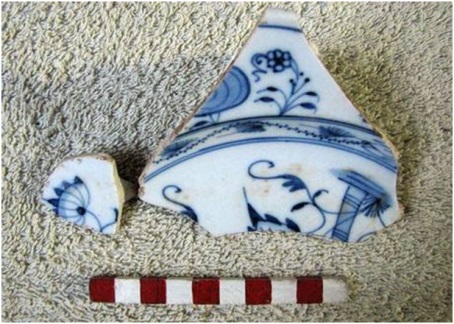 Fragment of ‘Made in Germany’ porcelain Silver from the Captains Kidd treasure found by Barry Clifford in Madagascar Jerome Starkey of the London Times writes: 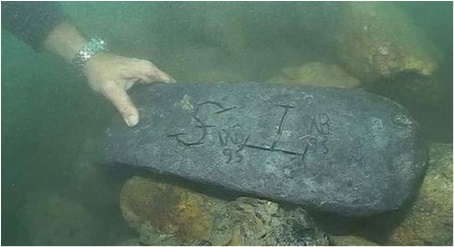 Treasure hunters have discovered an ancient silver ingot in the shallow seas off Madagascar which they believe belonged to one of Britain's best known pirates, Captain William Kidd. Barry Clifford, an American explorer, said that there was "overwhelming evidence" that the loot came from Captain Kidd's Adventure Galley, which he burnt in the Bay of Pirates in 1698. The ingot, engraved with Roman numerals and the initials MB, weighed 55kg (1201b), according to President Rajaonarimampianina of Madagascar, who accepted the treasure at a ceremony attended by the British ambassador. Records show that Kidd had deliberately beached the Adventure Galley on a sandy reef, known as a careening spot, because it was taking on water. Then he burnt it to salvage the iron parts. Mr Clifford said that he was sure that there was more silver on Kidd's vessel and another 13 wrecks nearby. Kidd, who was born in Dundee in 1645, had worked for the licensed privateer, capturing French vessels. But he fell foul of the British government after he looted the Quedagh Merchant in 1698, an Armenian boat with a British captain. "I think Kidd got the silver bars from the Quedagh Merchant and hid them below the ballast stones on the Adventure Galley so his crew wouldn't get them," Mr Clifford said. Kidd's crew mutinied when they got to the lsle Sainte-Marie, a notorious pirate haven in Madagascar, and 100 men joined another captain. "There's nobody else who would have left treasure in a ship," Mr Clifford said. "Kidd's crew were trying to kill him. He hid the treasure, then he fled Madagascar." Kidd was arrested by the Earl of Bellomont, tried in London and hanged over the river Thames in 1701. The hangman's rope snapped — which was sometimes seen as an act of God and cause for clemency — but Kidd was strung up a second time. His body was hanged in chains at Tilbury docks as a warning to other pirates. More secrets of an ancient shipwreck at Antikythera are about to be revealed Report from The Woods Hole Oceanographic Institution: 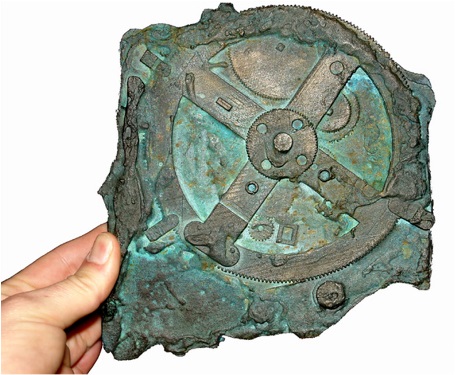 The complex clockwork device dated to the 2nd century BC contains more than 30 precise hand-cut gears and is regarded as the earliest analogue computer in the world. It is thought to have predicted the movement of the Sun, Moon and planets and is shown here as a3D photocopy A Greek and international team of divers and archaeologists has retrieved stunning new finds from an ancient Greek ship that sank more than 2,000 years ago off the remote island of Antikythera. The rescued antiquities include tableware, ship components, and a giant bronze spear that would have belonged to a life-sized warrior statue. The Antikyrthera wreck was first discovered in 1900 by sponge divers who were blown off course by a storm. The sponge diver surfaced raving about ‘heaps of dead naked women, rotting and syphilitic...horses on the seabed...green corpses”. They subsequently recovered a spectacular haul of ancient treasure including bronze and marble statues, jewellery, furniture, luxury glassware, and the surprisingly complex Antikythera Mechanism. But they were forced to end their mission at the 55-meter-deep site after one diver died of the bends and two were paralyzed. Ever since, archaeologists have wondered if more treasure remains buried beneath the sea bed. Now a team of international archaeologists including Brendan Foley of the Woods Hole Oceanographic Institution and Theotokis Theodoulou of the Hellenic Ephorate of Underwater Antiquities have returned to the treacherous site using state-of-the-art technology. 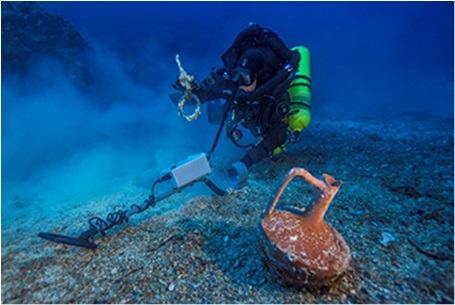 During their first excavation season, from September 15 to October 7 2014, the researchers have created a high-resolution. 3D map of the site using stereo cameras mounted on an autonomous underwater vehicle (AUV). Divers then recovered a series of finds which prove that much of the ship's cargo is indeed still preserved beneath the sediment. Components of the ship, including multiple lead anchors over a metre long and a bronze rigging ring with fragments of wood still attached, prove that much of the ship survives. The finds are also scattered over a much larger area than the sponge divers realized, covering 300 meters of the seafloor. This together with the huge size of the anchors and recovered hull planks proves that the Antikythera ship was much larger than previously thought, perhaps up to 50 meters long. "The evidence shows this is the largest ancient shipwreck ever discovered," says Foley. "It's the Titanic of the ancient world." The archaeologists also recovered a beautiful intact table jug, part of an ornate bed leg, and most impressive of all a 2-meter-long bronze spear buried just beneath the surface of the sand. Too large and heavy to have been used as a weapon, it must have belonged to a giant statue, perhaps a warrior or the goddess Athena, says Foley7. In 1901, four giant marble horses were discovered on the wreck by the sponge divers, so these could have formed part of a complex of statues involving a warrior in a chariot that was pulled by the four horses. The shipwreck dates from 70 to 60 BC and is thought to have been carrying a luxury cargo of Greek treasures from the coast of Asia Minor west to Rome. Antikythera stands in the middle of this major shipping route and the ship probably sank when a violent storm smashed it against the island's sheer cliffs. The wreck is too deep to dive safely using regular scuba equipment, so the divers had to use rebreather technology, in which carbon dioxide is scrubbed from the exhaled air while oxygen is introduced and recirculated. This allowed them to dive on the site for up to three hours at a time. Huge Roman coin find yields secrets of a Roman general who went rogue Jack Malvern writing in the London Times: 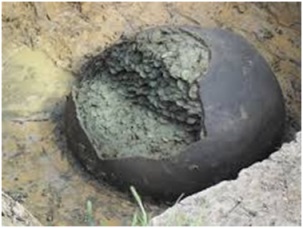 The largest pot of Roman coins ever found in Britain has revealed the history of Britain's first independent emperor. Carausius, a rogue commander who broke away from the Roman empire in AD286 to form his own fiefdom in Britain, was an enigmatic figure to historians until the discovery of hundreds of his coins among the Frome hoard, a vessel of 52,500 coins discovered in Somerset. Sam Moorhead, the finds adviser for Roman coins at the British Museum, said that the 850 pieces minted by Carausius suggested that the emperor was among the most colourful and sophisticated men to have ruled the land. I’m convinced this man was , a salty seadog," Dr Moorhead said. "A tall, dark burly man with curly hair and a raffish beard. He's an absolute bruiser." The coins suggest that Carausius's seven-year reign, before he was assassinated by his finance minister, was one of sophistication, grandstanding and relentless propaganda. The hoard, which was found in April 2010 but not immediately studied, features coins showing the self proclaimed emperor shaking hands with Britannia, a personification of Britain who was also depicted on the 50p coin in 2008. Other coins contain quotations from Virgil, Dr Moorhead said. "Carausius is the only person to quote Virgil on a coin. The man is steeped in Roman culture and is showing himself basically as a Roman emperor. "On the back he's shown handing out money to the people. This is what Roman emperors do. It's just like Maundy money. This is all part of his campaign to get the Roman army on side." Dr Moorhead has identified two mints set up by the emperor to burnish his image. There was one in London, but the best coins were probably produced by a travelling mint that accompanied Carausius as he toured the island to shore up support. These coins, marked with a C, are better defined and recorded historical events earlier than those minted in London. "What's certain is that the C-mint coins are much more personal to Carausius. I believe that wherever Carausius is, that's where the C-mint was," Dr Moorhead said. "I think he was moving around the country quite regularly. You're striking coins for your soldiers to give to them straight away. It's currying favour. I can only say this now because of the Frome hoard. C-mint coins are much more to do with his propaganda. If its no tCarausius himself instructing what should be on these coins then it's someone very close to him." Another coin, decorated with a lion and marked "Seculares", indicates that the emperor may have celebrated the Secular Games, a festival of entertainment and hunting. Carausius's command of the Roman fleet in the Channel allowed him to keep the Roman Empire at bay, Dr Moorhead said. 'This was the first time that Britain was successfully defended." he said. "The idea that Henry VIII as the first person to have a British navy is rubbish." Carausius's downfall at the hands of Allectus, his finance minister, in AD293 was reminiscent of the politics of 2007, he said. "There's a Tony Blair and Gordon Brown thing going on." Jack Malvern Rock Art from the 21st Century James Stewart explains all: 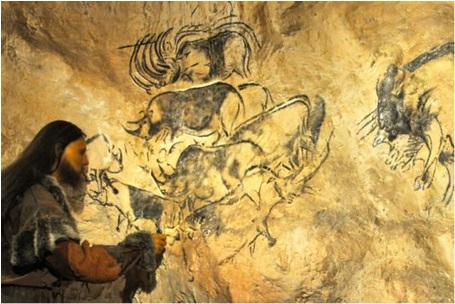 In 1994, three amateur cavers sensed air wafting from a cliff t where the Ardeche gorge ties itself into knots by the famous Pont d'Arc arch. They didn't know it, but they were about to discover the oldest art gallery on the planet. On April 25, the public will, for the first time, get to see that gallery for themselves — after a fashion. After four years of building, and a cost of €55m (£40m), the Caverne du Pont d'Arc, a vast and precise reproduction of that original cave, will reveal the astonishing prehistoric paintings that those cavers discovered. The find was extraordinary. Spread over 1,300ft were 425 pieces of rock art, dating back 36,000 years. Among them were lions and mammoths, woolly rhinoceroses, aurochs (the extinct forerunners of domestic cattle), even the world's only prehistoric owl — the whole merry carnival of Ice Age fauna, all as fresh as the day it was entombed by a rock slide 29 millenniums ago. What confounded experts about the Chauvet cave (named after one of its discoverers) was the quality. Everyone knew that the 18,000-year-old Lascaux cave paintings, in the Dordogne, were the pinnacle of prehistoric artistry. So how could these compositions be so sophisticated? The brushwork was exquisite, the carving expressive, the uneven limestone used with intent to animate images of galloping animals. Far from being primitive, these artists were palaeo Picassos. You and I will never see the originals. The cave has never been opened to the public: only scientists have been allowed entry. (An exception was made for the film-maker Werner Herzog, who was granted access for his 2010 documentary Cave of Forgotten Dreams.) Why? The carbon dioxide from the breath of decades of tour groups has faded the paintings at Lascaux beneath algal slime. The French authorities would not let the same mistakes be made again. Thus we have the world's largest replica cave. Nearly 700ft long, the Caverne du Pont d'Arc is two miles away as the owl flies. Its construction was a thoroughly 21st-century enterprise. From 6,000 photos and 680 hours spent laser-scanning every surface, the French designers created a computerised map of the Chauvet cave. They then chose 80 of the best bits and reassembled them like a speleological jigsaw. A steel skeleton for this condensed cave was engineered to millimetre precision, suspended within a vast warehouse, then smothered in cement and mortar. Every original detail is included, from splinters of the artists' Scots pine charcoal to the scratches of bear claws. Artists were selected to replicate the paintings' intuitive flow: Gilles Tosello, a scientist and lead artist, says he attempted to inhabit the prehistoric painters' minds, to feel the emotion that produced the paintings. Seeing the result is an enticing prospect. This isn't simply the world's first art. It's us. It's the dawn of civilisation, as Homo sapiens accelerated away from the Neanderthals. Yet doubts gnaw as I slalom through the Ardeche gorge on my drive to the cavern. Isn't a replica, however well intentioned, a bit Disneyland? Oh God, please don't let there be mannequins in furs. I'm here not for a prettied-up press visit, but for "Ie crash test", when buses of French schoolchildren will simulate the 4,000 visitors expected daily in peak season. On arrival, visitors follow a path through the forest and emerge at a corrugated concrete rotunda, brilliantly sited before a panorama of plains, Then it's down a ramp, shoulder aside the teenagers and into a raw concrete tunnel, like a cubist cavern. We cluster at the end. The acoustic is muffled. A door slides back. We're in. The temperature cools — like Chauvet, the Caverne du Pont d'Arc is kept 5C cooler than the outside in summer, 5C warmer in winter — and there's a waft of subterranean humidity. There's even a faint musty smell, a reproduction of the odour from the algae in the original cave. As your eyes adjust to the gloom, detail appears: fossils embedded in pale rock that feels utterly genuine; creamy stalactites that melt down buttresses, sparkling in the half-light. A railed walkway snakes away through pillars to the first of 10 viewing areas. Lights glow as we arrive, revealing a cavern strewn with bones. We loop past ochre palm prints. The man who slapped them there had a broken little finger and must have stood 5ft llin to reach so high. Then animals appear: the ochre outline of a giant elk, faint hump-backed mammoths, a strange elongated horse. And there's that owl scratched into a limestone overhang, wings folded, head turned to stare through slit eyes. The detail is extraordinary: countless precisely reproduced scratches, a host of tiny lesser drawings. A shiny surface was buffed by ancient bears. A bear skull sits on an altar like triangular slab. Nearby lights reveal an undulating niche, its surface scraped away to produce a white canvas for thousands of animals. Exquisitely charcoaled, they twang with energy. Wild horses snort. Stocky rhinos batter each other with outrageous horns. It's Life on Earth meets Guernica. Some of these overlapping images were drawn 5,000 years apart. The mind boggles at such intertwined history. The further we explore, the more potent the paintings become. Female pudenda appear. There's a pregnant horse, its belly swollen by rock. We are deep now — in the Chamber of Lions, the final cavern of Chauvet. It exudes raw animal power. A life-size male and female lion slink away together — to mate? Beautiful lioness heads gaze at scattering bison, their legs blurred like a proto-cartoon. In a far corner, a bison head drawn on a knobble glares at me, the first animal to do so. And look: a bison with a vagina and female legs. Animal and human finally mutated into one. It's genuinely shocking. A tunnel leads away and I stumble, blinking and discombobulated, into the Mediterranean sunshine. So, does the Caverne du Pont d'Arc merit the hype? It's a resounding yes — with some qualifications. The reproduction of the cave is nothing short of brilliant: the rocks are convincing, the paintings enthralling. If you can suspend your disbelief, it's a remarkable, primal experience. That's a big if. You'll have to lift your eyes from the concrete walkway; and — as I can attest from the stress-test day — there's nothing like throngs of fractious schoolchildren to anchor you in the present. Choose a quiet time to go, though — early or late, low season — and come with an open mind, and you're in for a treat. The best of 21st-century know-how has allowed the achievements of the Stone Age to shine. You owe it to your ancestors to see them. James Stewart was a guest of Ardeche Tourism (ardeche-guide.com) . The Caverne du Pont d'Arc is two miles north of Vallon Pont d'Arc. It is open year round and costs £9.50 for adults or £4.70 for children; under-lOs free (cavernedupontdarc.fr). The nearest airports are Avignon and Nimes, served by Flybe, Cityjet and Ryanair. 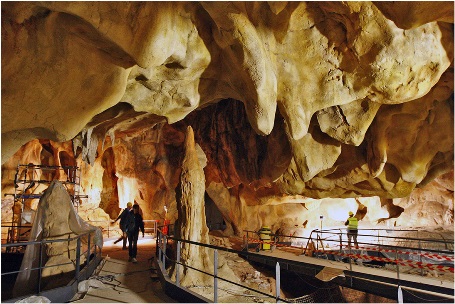 The KAFS Study Trip still available this year is: Diocletian’s Palace in Split, Croatia with Dr Paul Wilkinson: September 12th and 13th 2015. An exclusive visit to one of the most famous Roman Palace's in the world- the Palace of the Emperor Diocletian at Split in Croatia. Cost is £75 which includes all entrance fees but not flights or accommodation. We will also visit the Split Archaeological Museum, the nearby Roman town of Salona and the Venetian city of Trogir founded by the Greeks. Saturday 12th September 2015. In the morning we will meet at one of the North main gate for a tour of this wonderful building. The ground plan of the palace is an irregular rectangle with towers projecting from the western, northern, and eastern facades. It combines the qualities of a luxurious villa with those of a military camp. The three main gates are still preserved to the height of the still surviving ramparts. These monumental gates are set into the middle of each of the rampart walls and led to an enclosed courtyard. The gate overlooking the sea on the southern side was simpler in shape and decoration. With so much to see within the Palace we will continue our tour until lunch. Diocletian's cabbages are still renowned as a local speciality as well as other delicacies slow cooked in a pot called a Teka'. In the afternoon, we will visit the Archaeological Museum in Split, rightly described as the oldest museum in Croatia. Sunday 13th September. We will start the day with taking the local bus to visit Salona, the Roman town set on the hills above Split where we will visit the small museum and the rest of the town. In the afternoon we will take a local bus to Trogir situated on its own artificial island. Its rich culture was created under the influence of Greeks, Romans and Venetians. Now a UNESCO World Heritage Site the town is an absolute gem of architectural styles. What the price of £75 per person includes: • Fully-guided and escorted tours provided by Dr Paul Wilkinson • Entrance fees for museums and sites as specified in the itinerary. The trip does not include flights, transfers, hotels or meals (flights available from easyjet at about £150 - see- easyjet.com). Our preferred hotel is the Hotel Kastel, located beside Diocletian’s Palace at about £65 double (see www.kastelsplit.com), or www.booking.com. (Split, Dalmatia) 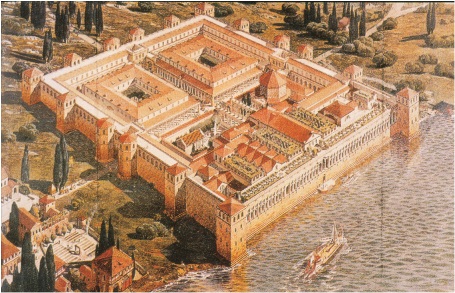 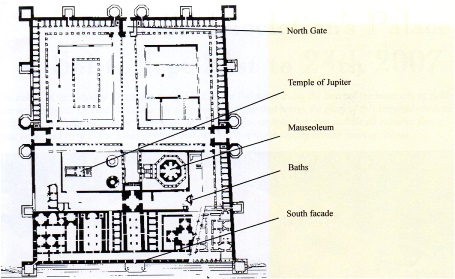 Research News: Aerial survey of Kent. Paul Wilkinson reports on a research project by the Kent Archaeological Field School ‘If you are studying the development of the landscape in an area, almost any air photograph is likely to contain a useful piece of information’ (Interpreting the Landscape from the Air, Mick Aston, 2002). Students of the KAFS are starting a two year programme of collating Google Earth aerial photographs from 1940 to 2013 to enable focused information which can then be followed up by ground survey. The fruitfulness of this can be appreciated by the work of the field school along Watling Street in North Kent where hundreds of important archaeological sites have been identified. The ultimate aim is to publish the results online. Aerial photography is one of the most important remote sensing tools available to archaeologists. Other remote sensing devices that will be used are satellite imagery and geophysics. All of this information can be combined and processed through computers, and the methodology is known as Geographic Information Systems (GIS). Our survey includes Roman roads (below), Roman temples and villas’. 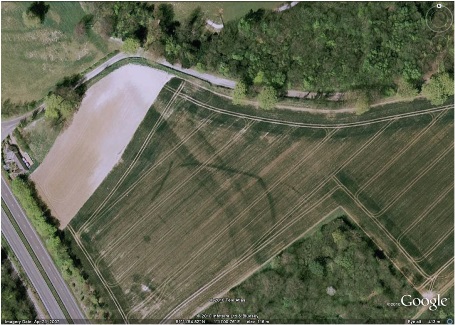 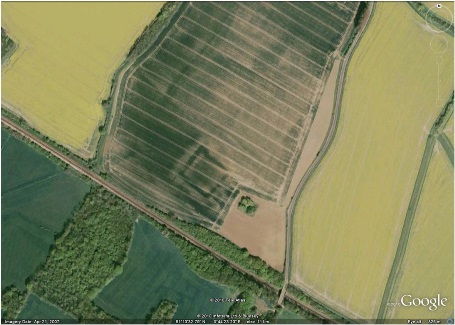 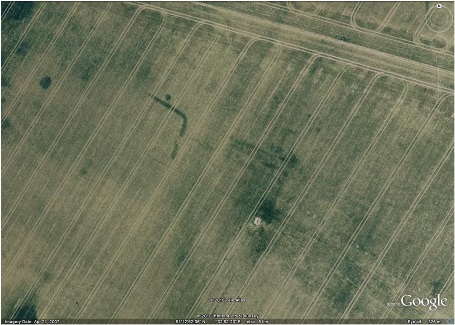 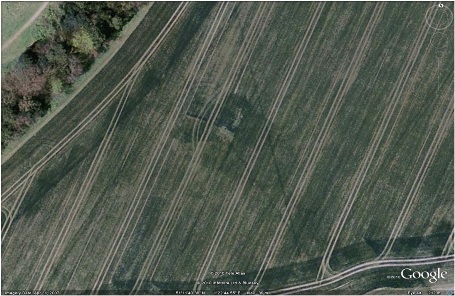 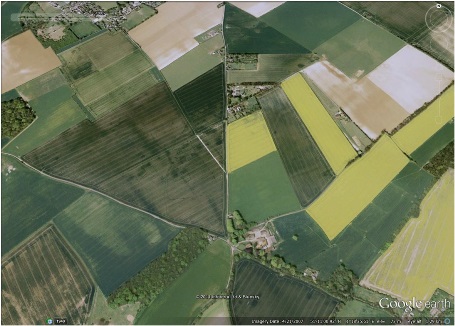 Courses at the Kent Archaeological Field School for 2015 and 2016 include: October 3rd and 4th 2015 Bones and Burials October 17h & 18th 2015 Archaeological Drawing with Jane Russell May Bank Holiday Saturday 30th April to Sunday 1st May 2016 . An Introduction to Archaeological Survey On this Bank Holiday weekend we shall look at the ways in which archaeological sites are recorded including standing buildings. Scale metric drawing will be the main theme of the course but also to include optical site level work. On the Monday you will have the opportunity to survey an impressive Roman and Anglo-Saxon sacred building at Stone Chapel just to the west of Faversham. £50 per person 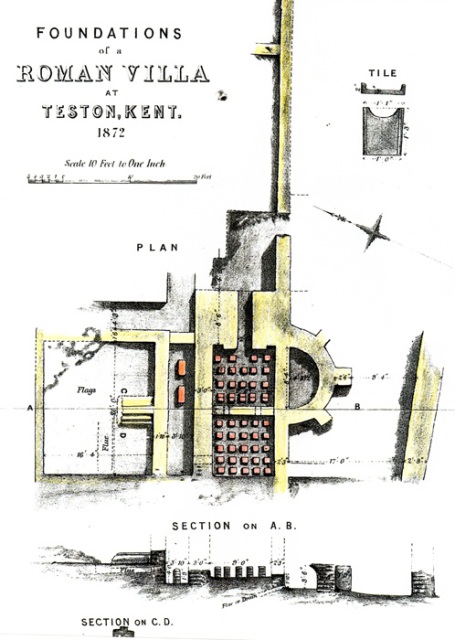 May 30th to June 17th 2016 excavating at 'Villa B' at Oplontis next to Pompeii in Italy We will be spending three weeks in association with the University of Texas investigating the Roman Emporium (Villa B) at Oplontis next to Pompeii. The site offers a unique opportunity to dig on iconic World Heritage Site in Italy and is a wonderful once in a lifetime opportunity. Cost is £175 a week which does not include board or food but details of where to stay are available (Camping is 12EU a day and the adjacent hotel 50EU). Email Paul Wilkinson at [email protected] for update on places left. 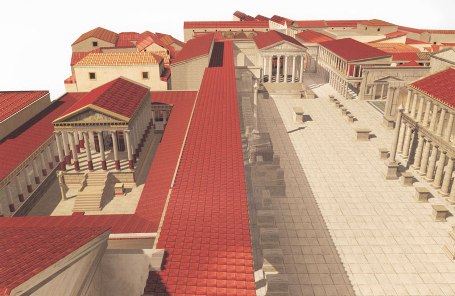 August 6th to 14th 2016. The Investigation of a substantial Roman Building at Sittingbourne in Kent A weekend investigating a substantial Roman building to find out its form and function. This is a newly discovered site confirmed by ground penetrating radar with tremendous potential and is one of the many Roman buildings earmarked by the Field School for further work. We have on our register a further six Roman sites in Swale District which will need similar research. 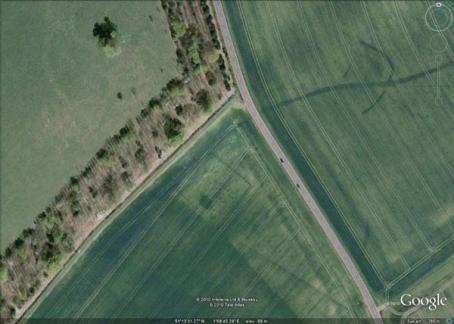 September 3rd to 11th 2016. Investigation of Prehistoric features at Hollingbourne in Kent An opportunity to participate in excavating and recording prehistoric features in the landscape. The week is to be spent in excavating Bronze and Iron Age features located with aerial photography and Geophysical survey. Cost is £10 a day with membership. 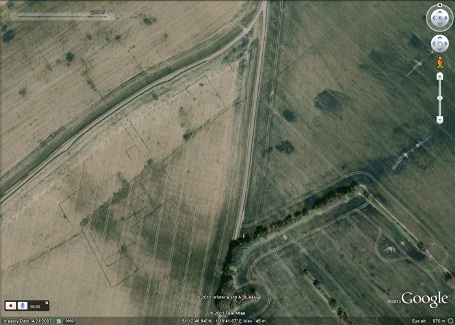 August 8th to August 12th 2016 Training Week for Students on a Roman building at Sittingbourne in Kent It is essential that anyone thinking of digging on an archaeological site is trained in the procedures used in professional archaeology. Dr Paul Wilkinson, author of the best selling "Archaeology" book and Director of the dig, will spend five days explaining to participants the methods used in modern archaeology. A typical training day will be classroom theory in the morning (at the Field School) followed by excavation atВ Abbey Barns Roman Villa in Faversham under the guidance of trained archaeologists. 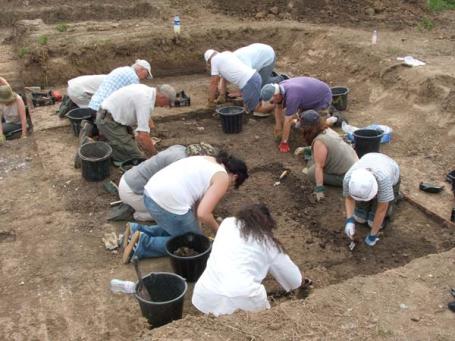 Monday 8th August: Why dig? Tuesday 9th August: Excavation Techniques Wednesday 10th August: Site Survey Thursday 11th August: Archaeological Recording Friday 7th August: Pottery identification Saturday and Sunday digging with the team A free PDF copy of "Archaeology" 3rd Edition will be given to participants. Cost for the course is £100 if membership is taken out at the time of booking. Non-members £175. The day starts at 10am and finishes at 4.30pm. For directions to the Field School see 'Where ' on this website. For camping nearby see 'accomodation'. October 3rd and 4th 2015 Bones and Burials Osteo-archaeology is the study of human remains. The course will be led by Dr Chris Deter who is an osteologist at the University of Kent. The course will cover the on-site recording of human remains and how they can reveal information about the person's age, sex and state of health. Excavated skeletons will be available for study and analysis in practical sessions. An excellent course at £75 for the weekend (£60 for members). Held at the Field School in Faversham. 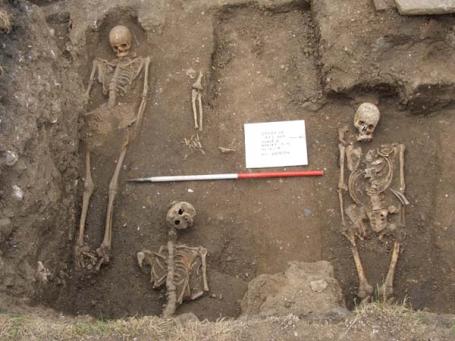 October 17th & 18th 2015, Archaeological Drawing with Jane Russell A beginner's and refresher course introducing participants to drawing archaeological artifacts. The reasons for drawing artifacts and the principles of archaeological illustration will be explained. There will be practical sessions each day demonstrating how to illustrate pottery, bone, metal and other artifacts found on archaeological sites. Course led by Jane Russell, who was senior illustrator of the UCL Field Archaeology Unit. Cost is £50 for members. 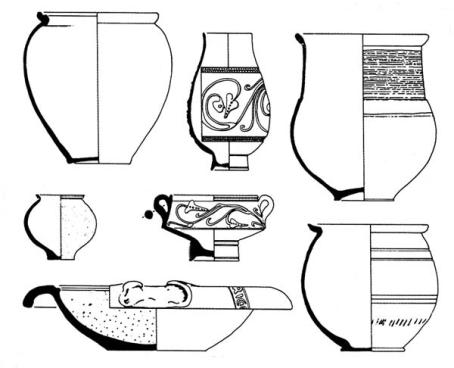 KAFS BOOKING FORM You can download the KAFS booking form for all of our forthcoming courses directly from our website, or by clicking here KAFS MEMBERSHIP FORM You can download the KAFS membership form directly from our website, or by clicking here |
|||||
 If you would like to be removed from the KAFS mailing list please do so by |
||||||
